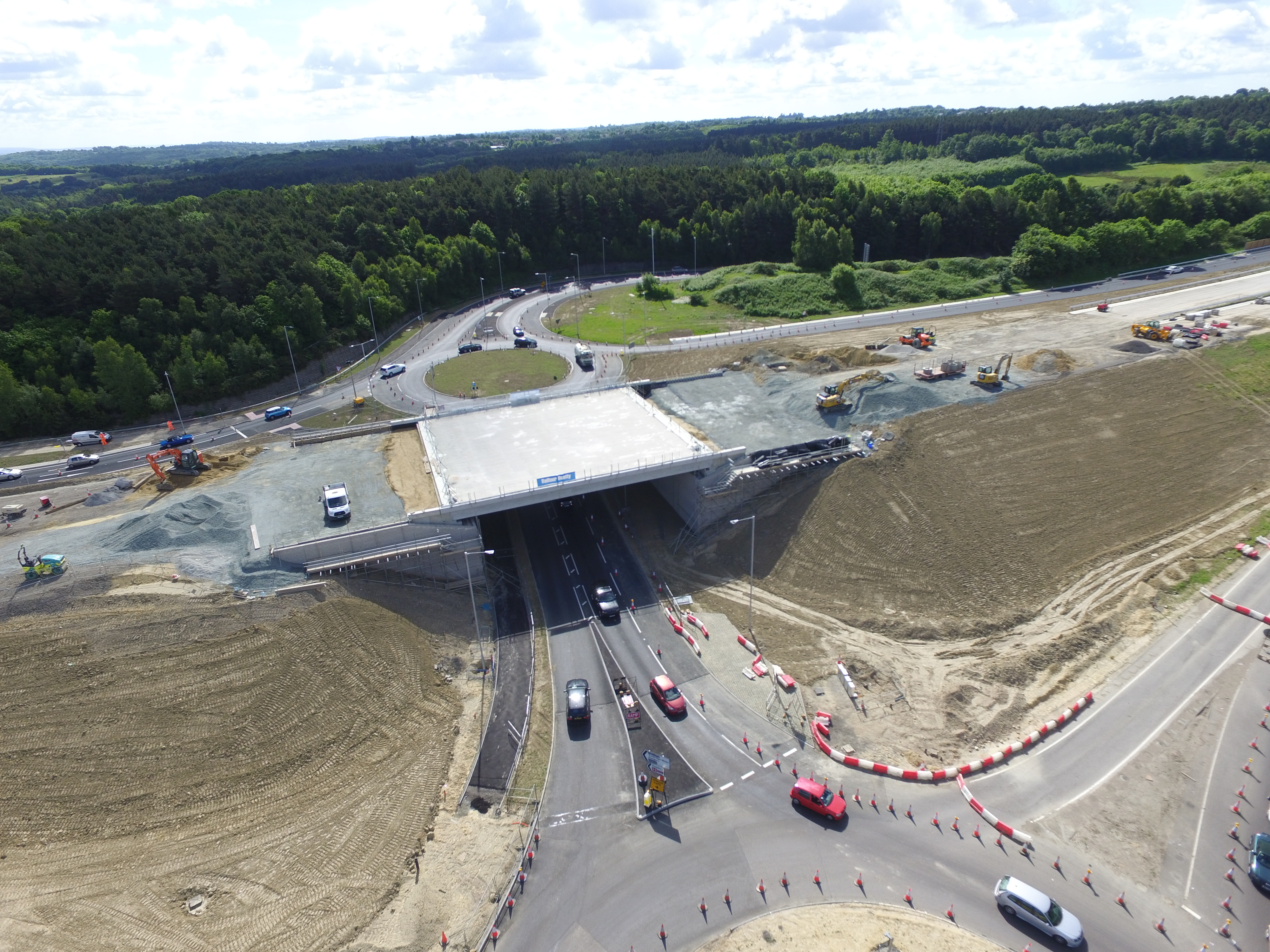The benefits of load-bearing reinforced soil walls
by Andrew Lees, on June 11, 2020
Load-bearing reinforced soil walls can cut construction costs by up to 75% and halve build times compared with traditional solutions, while being robust and low-maintenance.
Reinforced (or mechanically-stabilised) soil is becoming a standard way of forming cost-effective walls and bridge abutments on roads and railways, instead of the more traditional options that frequently involve piling and reinforced concrete.
The approach uses layers of geogrid to reinforce soil, increasing bearing capacity and increasing resistance to differential settlement. Reinforced soil structures have lower bearing pressures, which can eliminate the need for expensive foundations.
Ground Coffee: Andrew Lees is in the sand pit again this week, demonstrating how easy it is to build a load bearing reinforced soil wall.
Geogrid layers are mechanically connected to a range of facings, including modular blocks, concrete panels, gabions and crib walls, depending on the aesthetic requirements of the project. This creates strong, durable structures, requiring minimal maintenance, with design lives of up to 120 years and covered by the relevant HAPAS BBA certificates
In many cases, all of a bridge’s bank seat loading can be carried by a reinforced soil abutment. For example, we have designed temporary and permanent structures using our TensarTech systems to support loads of more than 500kN/m. If piling is needed, then the piles can be incorporated easily into the abutment fill.
A big advantage of using our durable HDPE geogrids is that they work with a huge range of materials, including non standard fills (such as selected site-won fill) and waste products such as pulverised fuel ash. This versatility can save time and money on projects, as well as reducing their carbon footprint.
Enabling safe construction of load-bearing bridge abutments on the A21

Our TensarTech TW3 modular block reinforced soil system was the ideal solution for building the load bearing bridge abutments and wing walls for overbridges at two new grade separated junctions between Tonbridge and Pembury on the A21 in Kent.
We worked with WSP to design the retaining structures for main contractor Balfour Beatty. The abutments were built using Department of Transport Type 6I/J aggregate, designed to meet bank seat loads of up to 566kN/m and to resist horizontal loads of up to 54kN. TW3 was used to build a total of 194 linear metres of abutments and 80 linear metres of wing walls up to 7.6m high. It was also used to build a 60m long, 3.6m high retaining wall on the route.
Aside from technical performance, Balfour Beatty chose TW3 because traffic flow had to be maintained throughout the works. TW3’s modularity meant it could be built in the limited space available, without heavy lifting equipment or propping, and with minimal disruption to road users.
Tensar's TensarTech Wall and Slope Systems
With over 30 years of construction knowledge, design experience and innovative geogrid products, our TensarTech permanent and temporary retaining wall and slope systems provide a number of facing types and construction options to suit the structure’s end use, location and required design life.
Our retaining wall solutions include precast concrete, dry-laid modular block systems (with the option of adding architectural, masonry or brick finishes); precast concrete panels; gabion and crib walls; and robust units suitable for aggressive marine environments. Our reinforced soil slope solutions can create vegetated slopes with angles of up to 70˚.
Want to learn more about Retaining Walls?
Learn more on our Introduction to Retaining walls page here.




.png?width=400&height=400&ext=.png)